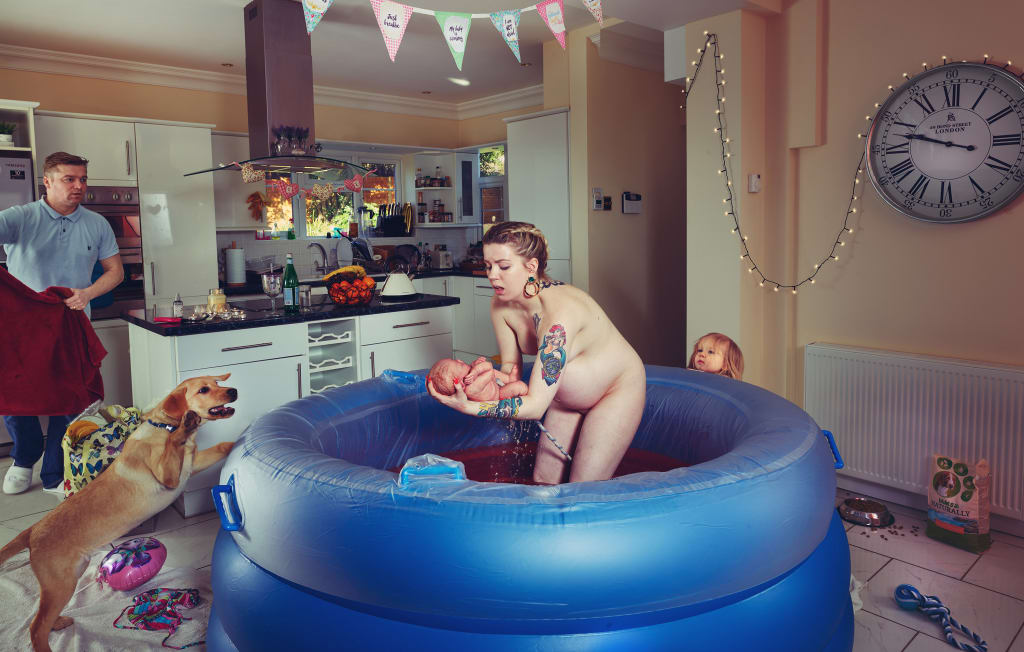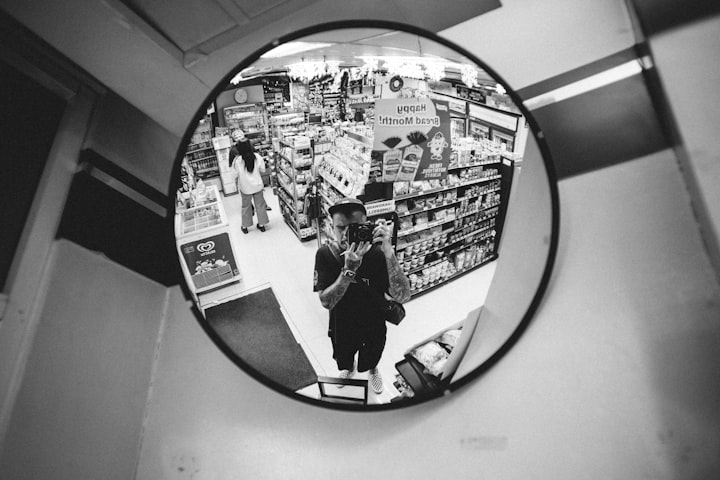There's a Deeper Secret Why Women Have Waterbirths
My heart melted when I first found out the truth.

Waterbirth might seem like a modern fad. Social media is full of images of women in the iconic blue blow-up pool, wearing bikinis and surrounded by loved ones, breathing their baby down with Hypno techniques.
But actually, waterbirth goes back far into history.
From as early as 2700BC, women were known to give birth in shallow ocean and river environments. Women of ancient Crete, Japan, South America and New Zealand were known to birth in shallow ocean and rivers.
What did they know that we don't?
Water as mother's ally
Before the wealth of research that came out about waterbirth in the 1960s, ancient people must have known instinctively of the science behind it. It acts as a shortcut for the woman into her deep primal self, making her labour hands-off, marking her territory, and keeping her attention away from useless stimuli.
Water activates the "relaxation response" in the muscular system, and minimises stimulation to the vestibular system—the part which gives us constant information about the body.
Quite simply, labouring women just say how good it feels to get into water!
When I first started to research waterbirth, I thought knew I all the reasons women did it. Pain relief is so much like nature's epidural, that they call waterbirth an "aquadural." So I was surprised, and really quite deeply moved, when I learnt something else about it.
Deeper in
There is a profound reason the Ancient Egyptians knew when it came to waterbirthing their chosen priests and priestesses.
It's something not all waterbirthing women may even know themselves.
Women may choose water for their own pain relief—but their babies gain something very special from the experience.
Think of childbirth from the baby’s point of view. Emerging from a tight, dark, warm and familiar space, into the open, cold and often bright-lit openness of the world. Yes, all that's inevitable when you're born into this world. But whilst we can do things to minimise light, cold and noise for a baby, we can't do much to change the order of the new sensations.
Igor Tcharkovsky said that the first breath for a baby is "forced out with a smack." Frédérick Leboyer wrote that the first gulp of oxygen "burns like fire."
But when a baby is born into water, they don't breathe straight away. And that is the point.
"When a baby is born into water, what if they drown?"
People often ask this with panic. Actually, the baby is okay and kept going by the placenta, 'til they reach the air and they fill their lungs for the first time.
In a non-water birth, when a baby experiences the new sensations of the world, they are also taking their first breath, all suddenly, at the same time.
But in a water birth, a baby experiences everything slower and gradually. Muffled sound, obscured light, no air on their face—just yet—all whilst the first breath is held back.
Going from the fluid of the womb to the fluid of the pool, the water acts as a continuity of environment. It paces the traumatic onslaught of all the sensations, putting the monumental first breath last, creating an overall calmer transition than a baby born on dry land.
And that, the philosophers say, has a powerful impact on us, indelibly affecting our lifelong “limbic imprint."
Many women will say, their water-born babies are different from their other children. More alert, calmer, more sensitive, or empathic? Did your water-born baby show special traits?
It's not for everyone!
As a mother myself, although I was enlightened to learn all this about waterbirth, it hasn't affected the way I give birth. I've had three births at home 'on dry land', and giving birth outside of water suits me just fine!
Some women think they will birth in water, but then at the time, change their mind. Some prefer to get out of water for the final stage. Some don't fill the pool in time! And vice versa, others who thought they wouldn't want it, find themselves in the shower or bath.
Even without water, we can still do so much to minimise the stress at the time of a baby's entrance into the world—as much as possible within the circumstances. By keeping quiet (not hoo-haaing with cheers), dimming lights if possible, and simply not subjecting baby to immediate weighing, cleaning or any routines at all. Putting baby straight to mother's chest, supporting them in a foetal posture, vernix unwiped, and not cutting the cord until it's drained—all these have a wealth of importance.
The less disturbed we can make the "golden hour" of mother-baby bonding following birth, even for those born by Caesarean, profoundly benefits the wellbeing of the next generation.
The image in this post is a staged scene from my fine-art photography series, Birth Undisturbed.
If you enjoy my articles, please share with your friends! The more clicks and reads I receive - and any tips you care to give - the more I can continue to create art for my project, Birth Undisturbed. Thank you! - NL
About the Creator
Natalie Lennard
I am a fine-art photographer and mother based in the UK, creating Birth Undisturbed, an award-winning series staging scenes of childbirth. (www.birthundisturbed.com). All proceeds from clicks and tips go toward the next in the series.






Comments
There are no comments for this story
Be the first to respond and start the conversation.